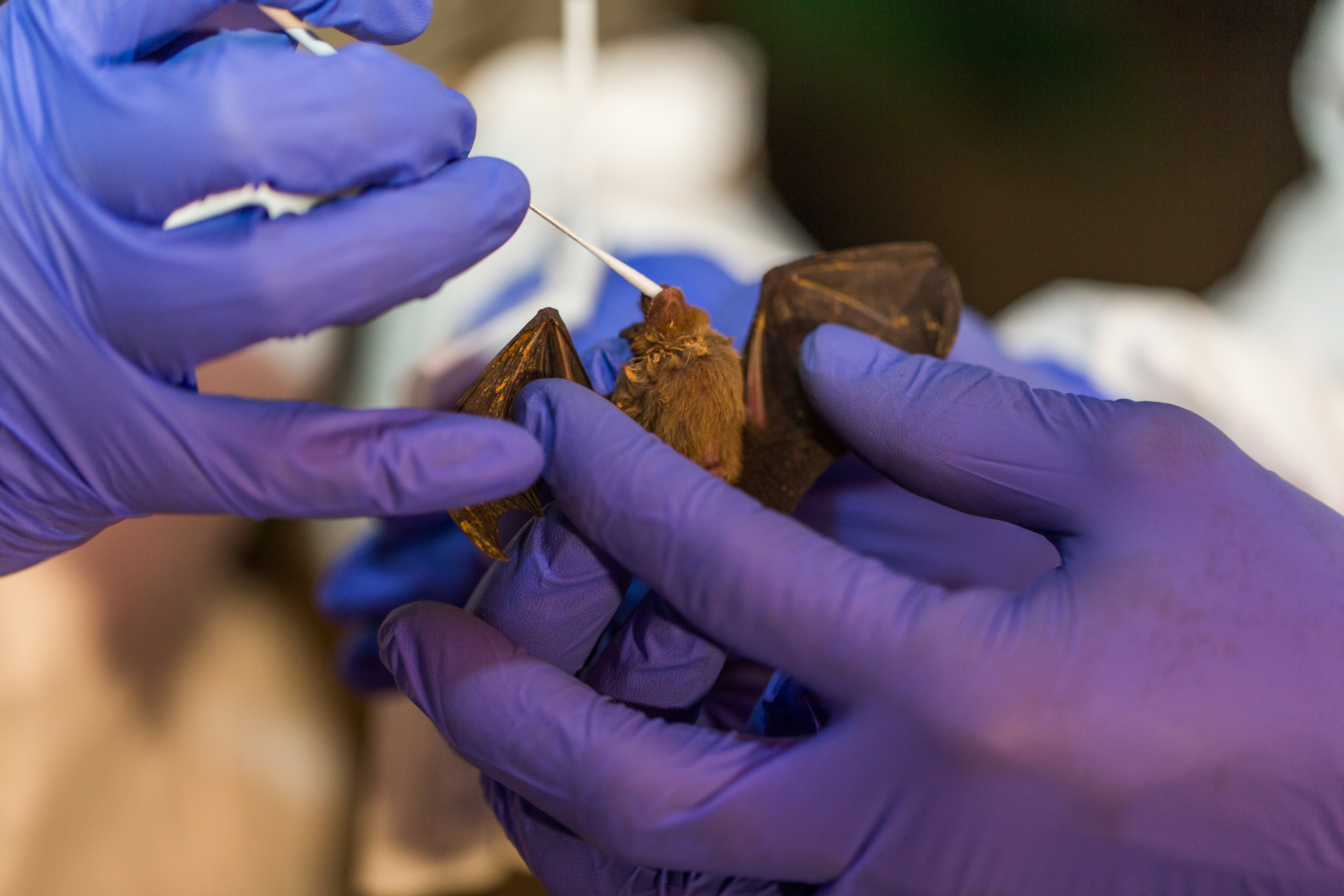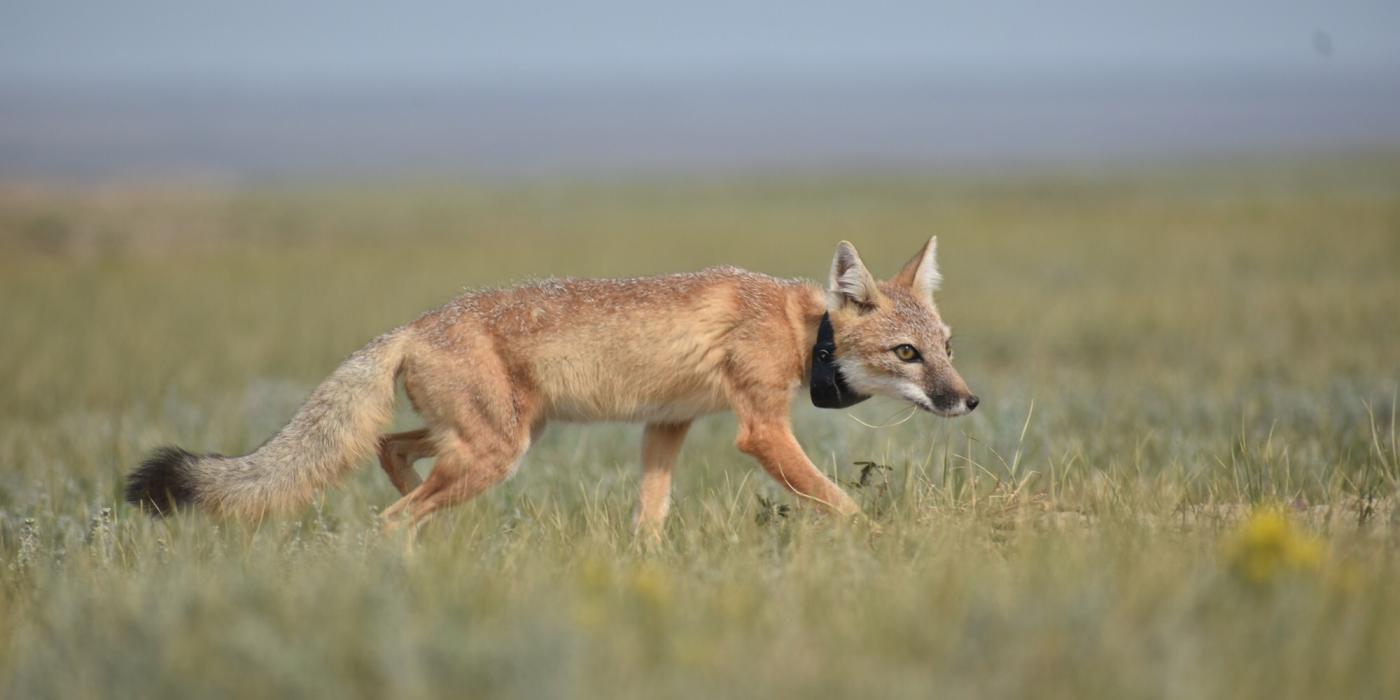Smithsonian Scientists Discover Six New Coronaviruses in Bats
No Evidence Novel Coronaviruses Pose a Risk to Human Health

Researchers with the Smithsonian’s Global Health Program have discovered six new coronaviruses in bats in Myanmar—the first time these viruses have been detected anywhere in the world. Future studies will evaluate the potential for transmission across species to better understand the risks to human health. According to the authors, the newly discovered coronaviruses are not closely related to coronaviruses Severe Acute Respiratory Syndrome (SARS CoV-1), Middle East Respiratory Syndrome (MERS) or COVID-19.
The findings, published today in PLOS ONE, will help understand the diversity of coronaviruses in bats and inform global efforts to detect, prevent and respond to infectious diseases that may threaten public health, particularly in light of the ongoing COVID-19 pandemic.
“Viral pandemics remind us how closely human health is connected to the health of wildlife and the environment,” said Marc Valitutto, former wildlife veterinarian with the Smithsonian’s Global Health Program and lead author of the study. “Worldwide, humans are interacting with wildlife with increasing frequency, so the more we understand about these viruses in animals—what allows them to mutate and how they spread to other species––the better we can reduce their pandemic potential.”
Researchers detected these new viruses while conducting biosurveillance of animals and people to better understand the circumstances for disease spillover as part of the PREDICT project. PREDICT, an initiative funded by the U.S. Agency for International Development (USAID), supports the global discovery and surveillance of pathogens that have the potential to spread from animals to humans. The PREDICT team in Myanmar consists of scientists from the Smithsonian; the University of California, Davis; Myanmar’s Ministry of Agriculture, Livestock and Irrigation; Myanmar’s Ministry of Health and Sports; and Myanmar’s Ministry of Natural Resources and Environmental Conservation.
The team focused their research on sites in Myanmar where humans are more likely to come into close contact with local wildlife due to changes in land use and development. From May 2016 to August 2018, they collected more than 750 saliva and fecal samples from bats in these areas. Experts estimate that thousands of coronaviruses––many of which have yet to be discovered—are present in bats.
Researchers tested and compared the samples to known coronaviruses and identified six new coronaviruses for the first time. The team also detected a coronavirus that had been found elsewhere in Southeast Asia, but never before in Myanmar.
Coronaviruses have caused widespread disease in humans, including SARS CoV-1, MERS and most recently the global COVID-19 pandemic. According to the authors, the newly discovered coronaviruses are not closely related to SARS CoV-1, MERS or COVID-19. Future studies are needed to evaluate their potential for spillover to other species to better understand the risks to human health.
The authors say these findings underscore the importance of surveillance for zoonotic diseases as they occur in wildlife. The results will guide future surveillance of bat populations to better detect potential viral threats to public health.
“Many coronaviruses may not pose a risk to people, but when we identify these diseases early on in animals, at the source, we have a valuable opportunity to investigate the potential threat,” said Suzan Murray, director of the Smithsonian’s Global Health Program and co-author of the study. “Vigilant surveillance, research and education are the best tools we have to prevent pandemics before they occur.”
About the Smithsonian’s Global Health Program
The Smithsonian’s Global Health Program (GHP) leverages multidisciplinary expertise in wildlife medicine, conservation pathology, training of international professionals and investigation of emerging infectious disease to combat threats to conservation and public health worldwide. GHP is part of PREDICT teams in Myanmar and Kenya.
GHP is a part of the Smithsonian Conservation Biology Institute (SCBI), which plays a leading role in the Smithsonian’s global efforts to save wildlife species from extinction and train future generations of conservationists. SCBI spearheads research programs at its headquarters in Front Royal, Virginia, the Smithsonian’s National Zoo in Washington, D.C., and at field research stations and training sites worldwide. SCBI scientists tackle some of today’s most complex conservation challenges by applying and sharing what they learn about animal behavior and reproduction, ecology, genetics, migration and conservation sustainability.
About PREDICT
PREDICT is enabling global surveillance for viruses that may spillover from animal hosts to people by building capacities to detect and discover viruses of pandemic potential. The project is part of USAID’s Emerging Pandemic Threats program and is led by the UC Davis One Health Institute. The core partners are USAID, EcoHealth Alliance, Metabiota, Wildlife Conservation Society and Smithsonian Conservation Biology Institute. Since 2009, scientists have worked in more than 30 countries in Latin America, Africa and Asia to strengthen capacity, put One Health in action and conduct surveillance for zoonotic diseases and emerging viral threats, including coronaviruses (e.g., SARS/MERS), filoviruses (e.g., Ebola), paramyxoviruses (e.g., Nipah/Hendra), influenza viruses (e.g., H1N1, H5N1, H7N9) and flaviviruses (e.g., Zika). As part of this effort, lab scientists around the world were also trained to perform viral testing—a vital skill in case an outbreak should emerge. Data from the project (when approved by host-country governments) is shared with animal and human health sectors to inform decision making and is made available to the public and global health community at www.data.predict.global. To learn more about PREDICT’s achievements and impact, visit https://p2.predict.global/.
###
Photo: Roshan Patel, Smithsonian’s National Zoo and Conservation Biology Institute


